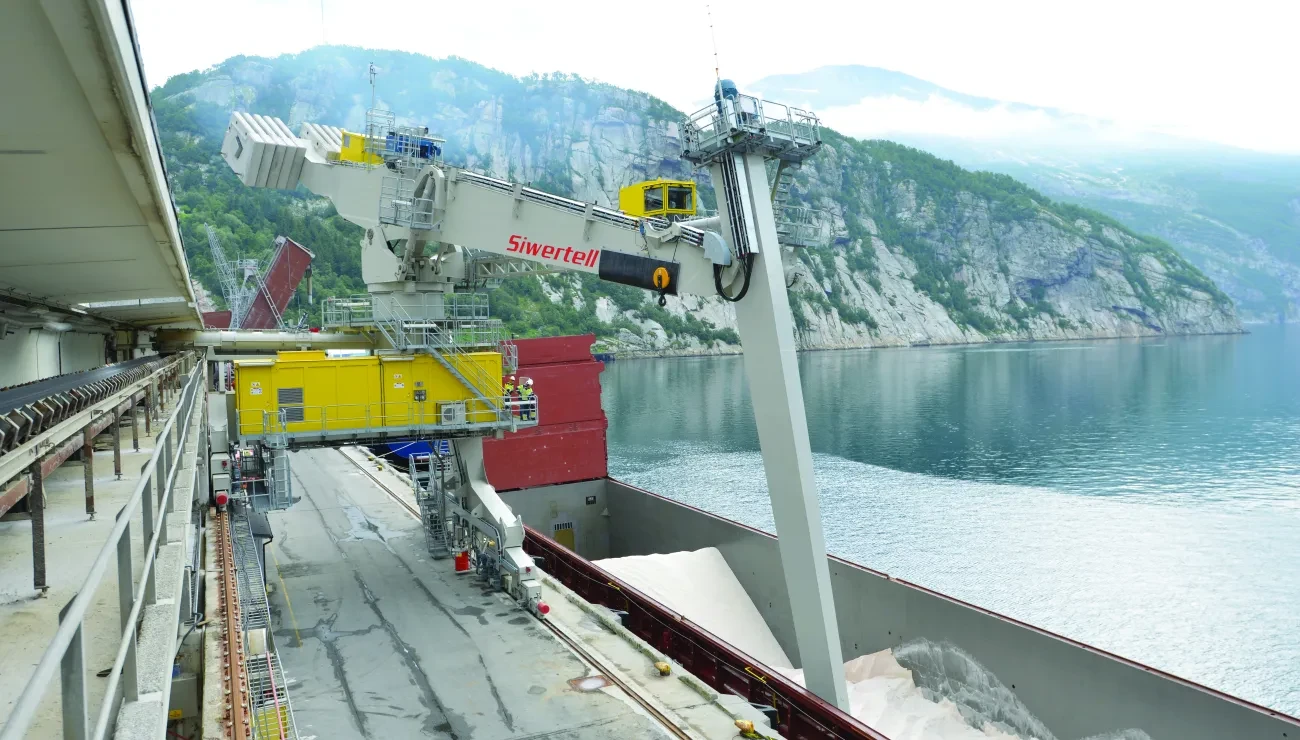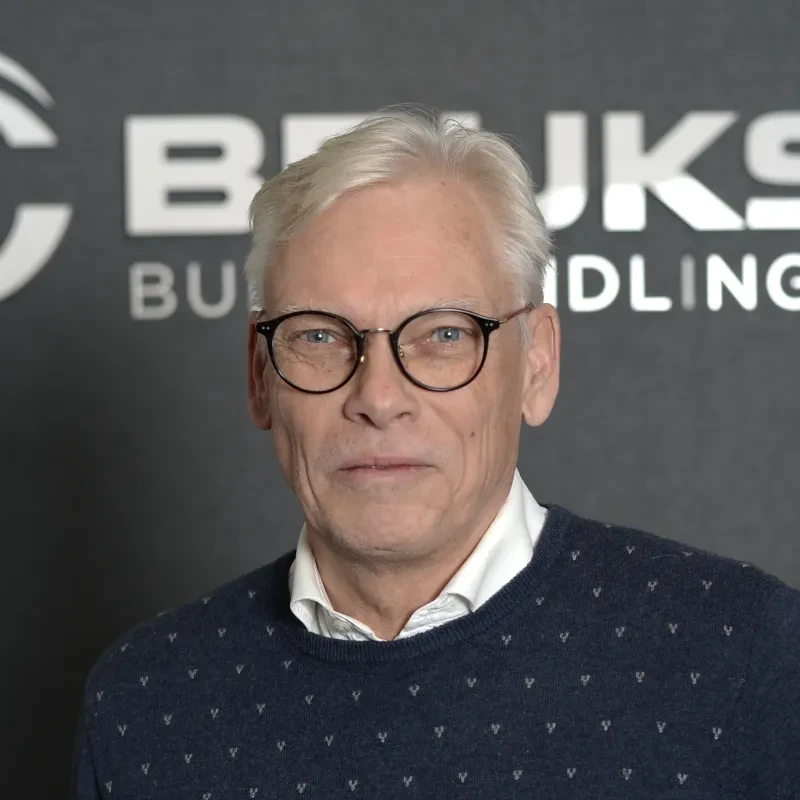
Ports need to prepare for hotter, wetter, stormier futures
7 Jul 2025Climates are changing, and the interface between land and sea is experiencing some of its most extreme effects; port terminals need to be ready for more climatic turmoil, and have access to dry bulk handling equipment that can be adapted for the challenge
Unpredictable change is on the horizon. The Global Maritime Trends 2050 report, published in 2023 by shipping services group Lloyd’s Register (LR), notes that: “Of the world’s 3,800 ports, a third are located in a tropical band vulnerable to the most powerful effects of climate change, and other key ports are already under pressure; some of the world’s largest, could potentially be inoperable by 2050 with a rise in sea levels of only 40cm.”
Climates that were once temperate could become less so, leaving others becoming even hotter, and some wetter and stormier. Although the impact of modeled climate changes varies depending upon global location, according to TT Club, a leading independent provider of mutual insurance and related risk management services to the international transport and logistics industry, in general, port and terminal infrastructure are likely to be increasingly vulnerable.
It notes that port terminals face a climate trilemma: flooding from rising sea-levels and increased intensity of storm surges or heavy rainfall; high winds resulting in infrastructure damage, along with operational disruptions due to limitations on the safe working windspeed of the port or terminal assets; and high temperatures that may exceed design limitations of equipment, potentially resulting in asset failure or increased fire risk, together with welfare considerations for personnel in high temperatures.

Technologies for tomorrow
TT Club says that these impacts are being felt now around the globe and the climate model predictions indicate that they are likely to grow in significance. The insurer explains that although there is variation in climate model predictions: “development and asset management plans must have a degree of flexibility built in to accommodate this uncertainty, providing the ability to adapt infrastructure and assets as the climate actually changes and climate models advance.”
“Operators investing in equipment now, must be doing so with climate change in mind,” continues Jan Karlsson, Sales Director, Bruks Siwertell. “Our dry bulk handling technology, ship unloaders, ship loaders and conveyors, serve port terminals for decades. So, this equipment needs to not only meet a terminal’s needs today, such as the predominant material it receives, along with ship sizes, through-ship capacities and volumes, but it must also incorporate degrees of adaptability for the likelihood of climate change.”
High humidities, significant windspeeds, desert hot climates, Arctic freezes and torrential rains, are just some of the climatic challenges that Bruks Siwertell’s dry bulk handling machinery currently faces. “However, we have a responsibility to equip operators with machinery that, within reason, remains operational as our climate becomes more turbulent,” Karlsson notes. “Some operators, particularly those serving port terminals in extremely hot climates, are well ahead of the curve and have already been specifying dry bulk handling equipment that is specifically designed to withstand even hotter environments.”
Operating at extremes
Bruks Siwertell’s screw-type dry bulk handling technology operates all over the world, successfully serving terminals within the Arctic Circle, in the tropics, and in the Middle East, withstanding excessive temperatures and humidities. Depending on the ambient, or extreme operating temperatures, Siwertell ship unloaders, for example, can be adapted to perform in temperatures from as low as -35 degrees Celsius up to +55 degrees Celsius.
For operating in very cold climates, the highest grades of steel have to be used, along with specially-adapted cabling, and hydraulics. Applicable for extremely cold, but especially very hot operations as well, all components, such as electric motors, have to be protected within housings.
Bruks Siwertell has a number of cold weather references, and a notable example includes the Yara fertilizer plant in Glomfjord, within the Arctic Circle. It is being served by its second Siwertell unloader, retiring its first after more than 30 years of operation.
Able to discharge vessels of up to 20,000 dwt, the unloader is equipped with a dust-suppression system and an advanced electrical control unit, including the Siwertell monitoring system, known as SiMon. It started operating in 2019, and handles demanding dry bulk materials such as various rock phosphates and potash fertilizer at a continuous rated capacity of 600t/h, with a peak capacity of 700t/h.
The unloader meets strict environmental criteria, managing high prevailing winds and operating successfully in exceedingly cold conditions. When windspeeds are excessive, Bruks Siwertell equipment always comes with applicable storm locking devices and additional tie-downs if requested. All ensure the capability of withstanding the location’s weather conditions.
At the other extreme, Bruks Siwertell has numerous references for operating in very high temperatures. For example, returning customer Kuwait Portland Cement Co has been operating a Siwertell ST 490-F rail-mounted unloader for over two decades in Shuaiba Port, Kuwait City. It was joined in 2022 by a second similarly-sized ship unloader.
Both unloaders are adapted to operate in Kuwait’s extreme climate. To accommodate predicted temperature rises in the region, the latest unit is designed to withstand ambient summertime temperatures of up to 55 degrees Celsius.
Lightning strikes, earthquakes and dust
Stormy conditions have always existed, but are likely to become more problematic. Bruks Siwertell delivers equipment with lightning rods to withstand a lightning strike, and systems can be adapted to mitigate the impact of earthquakes, ensuring that they do not tip over during seismic activity. This includes a 2024 order for a ship unloader that is designed to withstand seasonal typhoons and earthquakes and will serve one of the Philippine’s largest companies. Also, the new Siwertell ST 640 M-type unit will be installed on a particularly exposed jetty, and will be able to discharge grain from vessels from both sides.
For many terminals, scrupulously clean material handling is now a prerequisite to being granted an operating licence. Siwertell screw-type ship unloaders and loaders are totally enclosed, minimizing dust emissions and preventing spillage. Some installations require very strict environmental regulations. For example, the Boliden Tara Mines terminal in Dublin, Ireland, which handles extremely hazardous zinc and lead, required its ship loading system meet close-to-zero dust emissions and very low noise levels.
Bruks Siwertell developed a totally new system, comprising a triple-enclosed belt-type ship loader, with luffing and slewing capabilities, a reversible shuttle-belt conveyor, with double-embedded covers, as well as a triple-enclosed jetty and overland conveyor. The tailor-made dust extraction system consists of a two-stage filtration approach, with special high-efficiency particulate air (HEPA) filters forming the final stage of the process. The clean air released to the atmosphere from this filtration process contains no measurable particles.
Other adaptations and optional features include an emergency power supply, operator cabins, including a cabin arm, CCTV monitoring, surface treatments, and semi-automatic unloading and loading capabilities when operating with additional laser- and radar-based anti-collision systems.
“We know that every operation is different, but we also understand that every installation has to work in situ, accommodating environmental, geological and climatic considerations, as well as meeting any operator-specific requirements and performance criteria,” stresses Karlsson. “This is why our technology is tailormade and designed to be adapted, offering peak market-leading performance whatever tomorrow’s conditions.”
PLEASE CONTACT US FOR MORE INFORMATION

 Bruks-Siwertell
Bruks-Siwertell